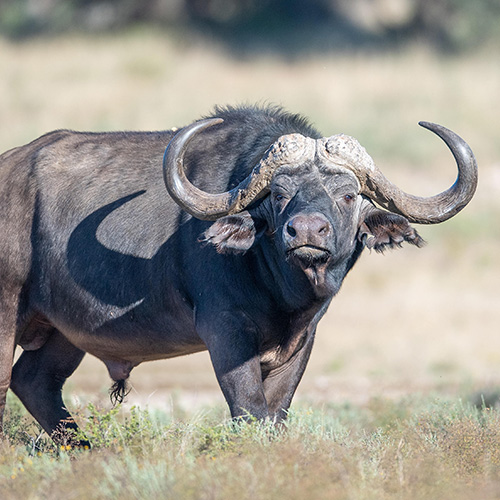
Cape Buffalo
These large cow-like animals are widely regarded as one of the most dangerous and powerful animals on the African continent.

KUDU
These woodland antelope are abundant in the Northern Cape area. The name 'Kudu' stems from the indigenous Khoikhoi language.
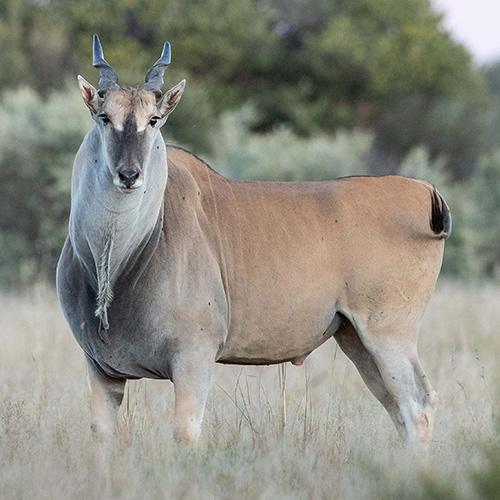
ELAND
The Eland, also known as the Southern Eland or Eland Antelope, is a plains antelope that is commonly found in South Africa.
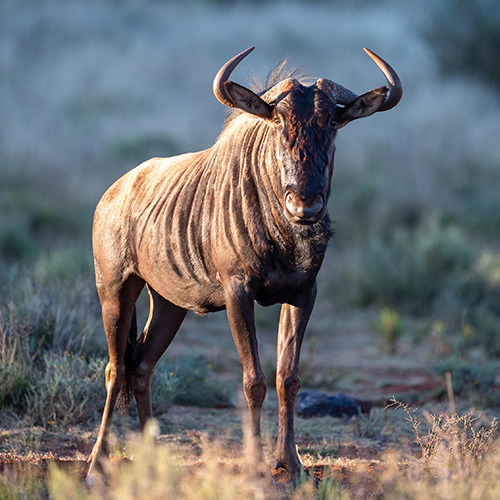
BLUE WILDEBEEST
Blue Wildebeest (or Brindled Gnu) are so called due to their silvery-blue sheen of fur, which varies from a greyish colour to brown.
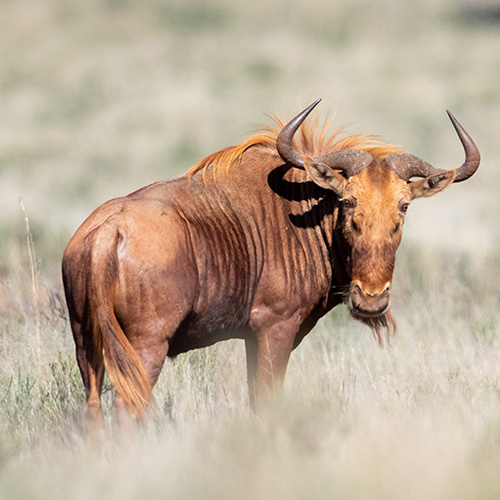
GOLDEN WILDEBEEST
The Golden Wildebeest is a rare mutation of the Blue Wildebeest. They are beautiful and very muscular with a golden beard.
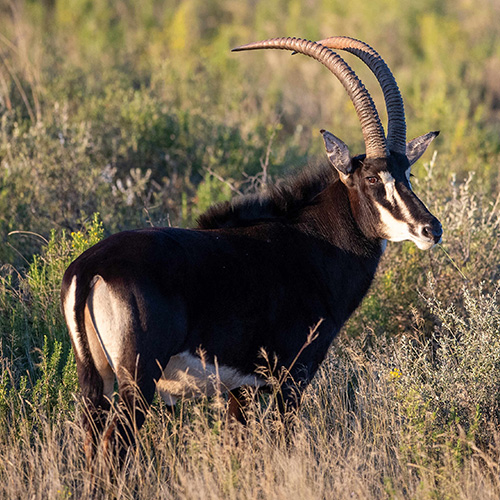
SABLE
Found from East to Southern Africa, this antelope has a long face, short neck, dark mane, and impressive ringed horns.

ROAN
Roan are found from Western to Southern Africa. Named for its roan colour, it has a light underbelly, white eyebrows and red nostrils.
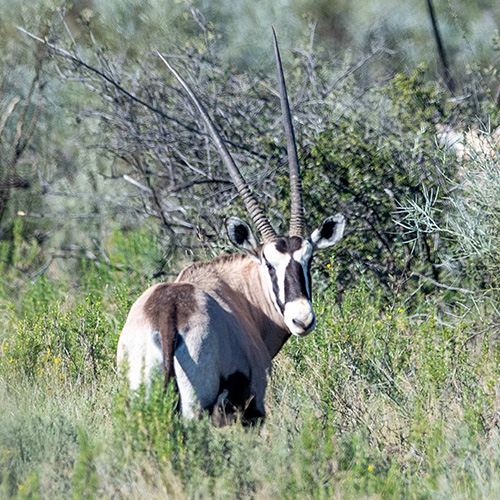
ORYX (GEMSBOK)
A large type of antelope that is native to South Africa. Light brownish-grey, with light patches near the rear of the rump.

SPRINGBOK
The Springbok is a small antelope, reddish-brown with a pale underside. There is a dark brown stripe on each flank.
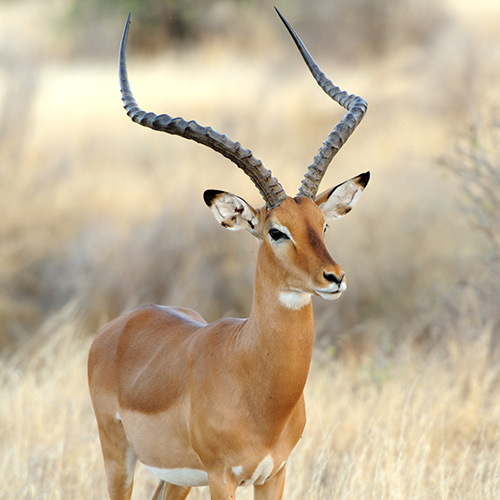
IMPALA
The Impala or Rooibok is a Sub-Saharan African antelope and is commonly included in the itinerary of every hunter's expedition.

ZEBRA
The Zebra has three species in the wild and is part of the Equidae family: well-known and prized for its black-and-white-striped coat.
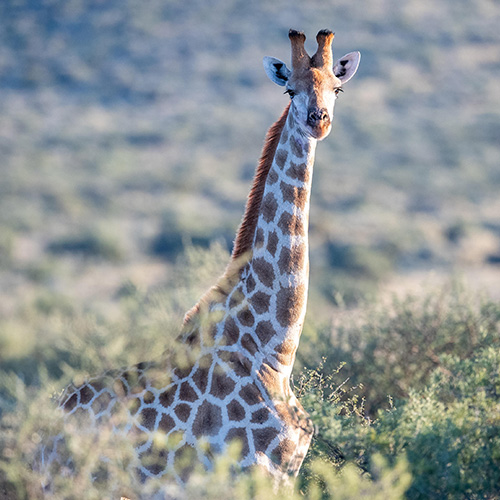
GIRAFFE
Giraffes are the world’s tallest living animals, easily identified due to their exclusively long neck and pelage markings.
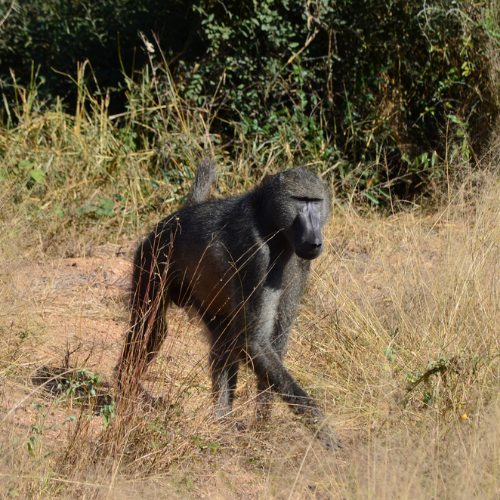
BABOON
Cape baboons are primates and also one of the world's largest monkeys. They have a dog-like face and big, prominent canines.

BROWN BLESBUCK
As a subspecies of the Bontebok, these antelope inhabit open grasslands and have a distinctive white face and forehead.
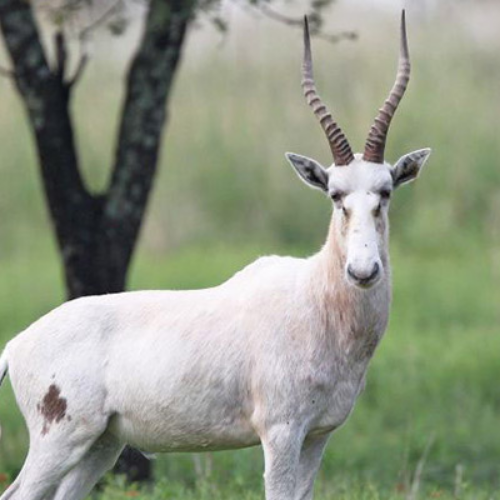
WHITE BLESBUCK
White Blesbuck live in the open plains of South Africa. They are a colour variation of the Brown Blesbuck and not a subspecies.
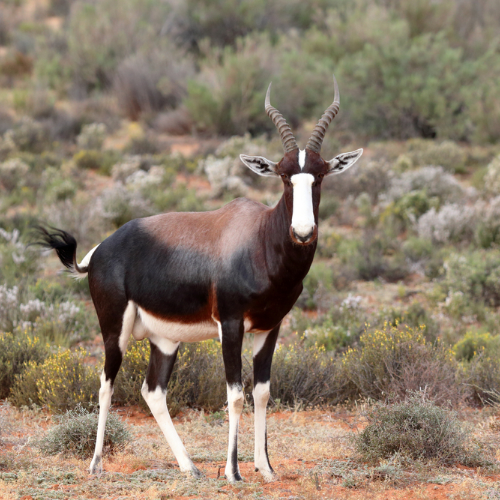
BONTEBOK
A medium-sized antelope, generally dark brown with lyre-shaped horns, a black-tipped tail and striking white blaze on its face.
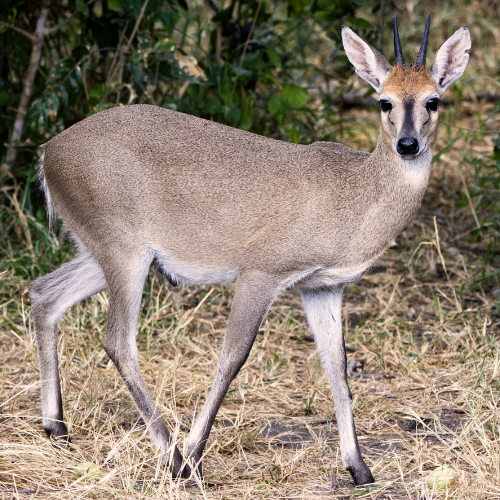
GREY DUIKER
The Grey Duiker is a small, shy antelope with white underparts. Unlike most antelope, females are larger than males.

BLACK WILDEBEEST
These impressive antelope live in grasslands and are smaller than their cousins. They are brown with a black mane and cream tail.

GOLDEN GEMSBOK
A mutation in colour from the regular Common Gemsbok. They live primarily in open ground, and can survive in the harshest environments.
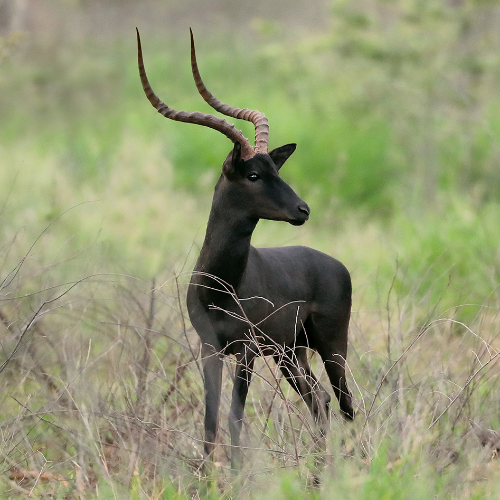
BLACK IMPALA
Black Impala are very rare and highly prized by hunters in Africa. They are highly alert animals and make for excellent trophy hunting.

JACKAL
The jackal is a medium-sized member of the canine family. Opportunistic in nature, they hunt small mammals, birds and reptiles.
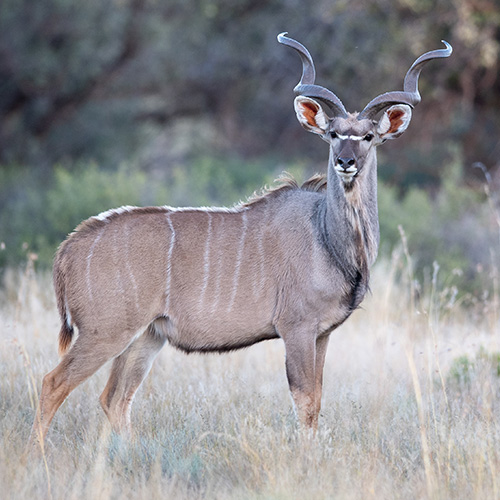
SOUTHERN GREAT KUDU
Both Kudu and Greater Kudu have a rust-like colour, lateral stripes and a crest along the spine, but the latter also has a fringe under the chin.
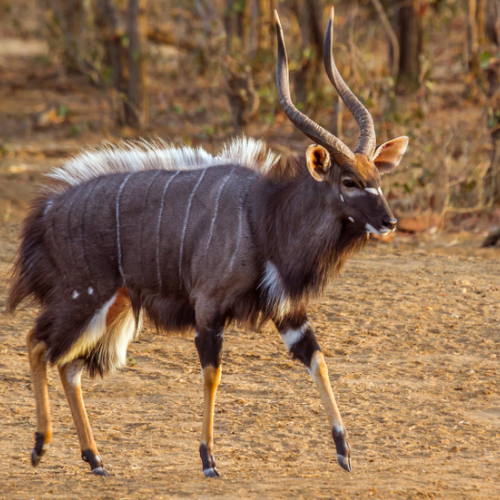
NYALA
A spiral-horned, medium-sized antelope. Considered the most sexually dimorphic antelope of all species, only males have horns.

PORCUPINE
Large nocturnal rodents found across most of Africa. They have clusters modified hairs called spines or quills on their back, sides, and tail.
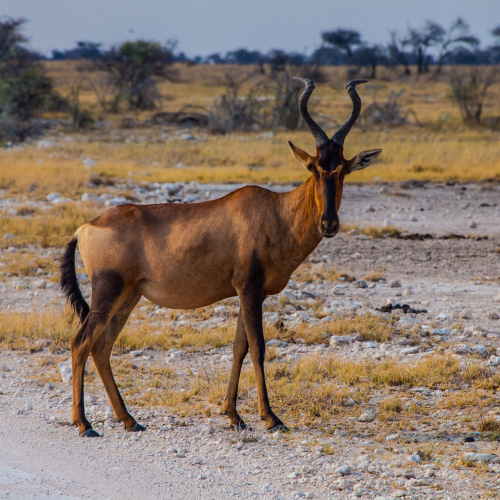
RED HARTEBEEST
A large nomadic antelope with a longer face than other species and a distinctive red-brown coat and contrasting white belly and rump.
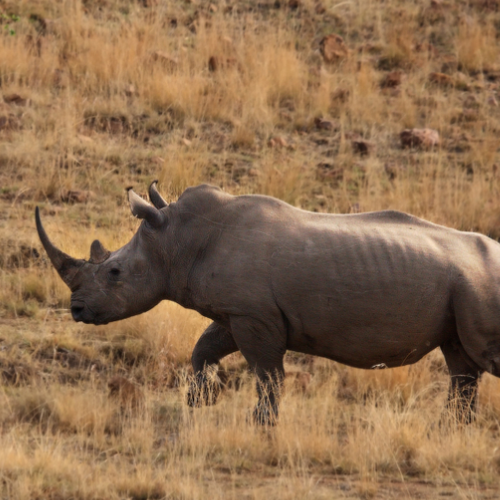
SOUTHERN WHITE RHINO
The White Rhino or Square Lipped Rhino is the largest of all species. It has a noticeable hump on the back of its neck and four stumpy feet.

TSESSEBE
Common Tsessebe are large grazers and among the fastest antelopes in Africa. They can run at speeds up to 55 mph.
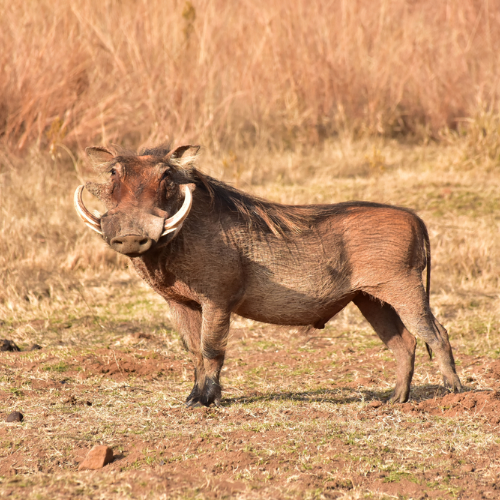
WARTHOG
A wild pig species known to be notoriously aggressive. They have four impressive tusks, two razor-sharp lower canines and two curving uppers.

WATERBUCK
A large antelope found close to large bodies of water. They stay close to rivers, lakes and valleys, even fleeing into the water to escape threats.
